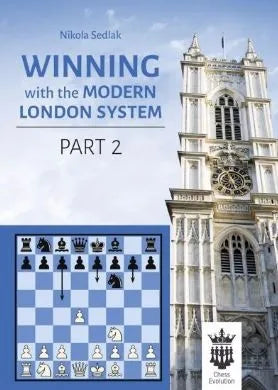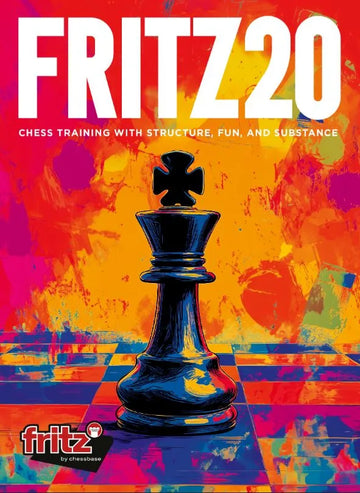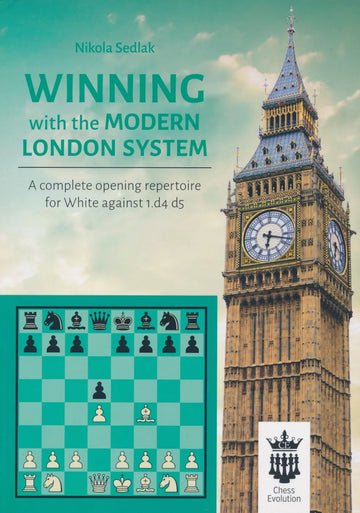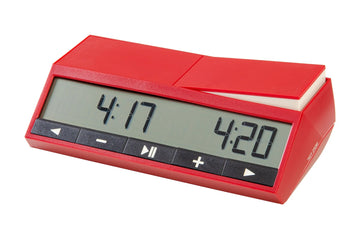Starting Out With The London System
The London System has a well-earned reputation for offering White a solid start to the game. Advance the queen’s pawn to d4, slide the dark-squared bishop out to f4, and then play the same first few moves, against nearly anything that Black does.
One of the strongest appeals of the London System is that it requires very little opening study. However, although the London System is beginner-friendly, it is also employed by many of the world’s top grandmasters. It is very playable at every level of chess.
In this article, we cover how to play the London System, including:
- Why you should consider choosing the London System.
- Thematic ideas when playing with the White pieces.
- How to continue your education in this important chess opening for White.

Introduction To The London System
The London System is characterized by playing 1. d4 and Bf4. By developing the dark-squared bishop early, White puts it on an active square before playing e3. From f4, the bishop occupies a useful post on the outside of White’s own pawn chain.

It is no secret that the London System is popular because of how easy it is to learn and to play. Chess players of all levels appreciate the fact that they can reliably reach a playable middlegame in the London System.
Many openings require vast move-by-move memorization in order to play them successfully. The London System, by contrast, demands far less effort. It is largely for this reason that the London System made it onto our list of the 10 Best Chess Openings For White.
White’s play tends to follow one of two main development paths:
Option 1: The Main Line London System
The calmer way to play the London System involves establishing the thematic “pyramid” pawn structure with pawns on c3 and e3, both supporting the central pawn on d4. In this setup, White typically plays Nf3, Nbd2, and 0-0.

With both sides having castled on the same side of the board, the game will usually be decided over the course of a long, drawn-out strategic battle.
Related: Improve your strategic chess understanding with Chess Strategy For Club Players.
Option 2: The Jobava London System
Named after the creative Georgian chess grandmaster Baadur Jobava, this represents a more aggressive approach. The key difference lies in the placement of White’s queenside knight.
- In the Main Line London System, White places a pawn on c3, while the queenside knight typically goes to d2.
- In the Jobava London System, White instead leaves their c-pawn on its starting square and develops their queenside knight via Nc3.

In the Jobava London System, White may castle queenside or leave their king uncastled deep into the middlegame. Often, White goes for a kingside pawn storm. This idea can work particularly well when Black goes for a fianchetto setup with …g6 and …Bg7.
Related: When A Pawn Storm Can Make Sense.
We can see this in action in the above position. White has already played h4, and is threatening to push ahead with h5 next move. Once the h-file is opened, the White rook on h1 can serve as a dangerous attacking unit.
These are two very different approaches to the London System, so consider which style of chess you prefer when deciding which one of them to adopt.
- If you enjoy deep, strategic middlegames, then the Main Line will be your best bet.
- If you thrive in sharp, double-edged positions, then the Jobava London System may be for you.
Regardless of which variation you choose, here are some thematic ideas that you should acquaint yourself with in order to play the London System with maximum success:
Ideas For White In The London System
Dominating The e5 Square
If Black replies to 1. d4 with the Symmetrical Queen’s Pawn Opening (1. …d5) then White can look to dominate e5. White’s dark-squared “London” bishop on f4 naturally influences this square. White can bring more pressure to bear with the typical maneuver Nf3 -> Ne5.
An example occurred in the game Kamsky vs. Shankland, 2014, where White played 9. Ne5.

From e5, White’s knight controls many important central squares. Black decided to exchange that knight via 9. …Nd7, 10. Nxd7 Bxd7. However, this came at the cost of Black’s own important kingside knight. This allowed Kamsky to deploy the Greek Gift sacrifice with 13. Bxf7+!! a few moves later, with a decisive attack after 13. …Kxh7, 14. Qh5+ Kg8, 15. Ne4.

It is worth emphasizing that this sacrifice would not have been effective if Black still had their knight on f6.
The e4 Advance
After developing their forces to the proper squares, White can often look to break in the center with the e4 pawn advance.
An example of preparing for this pawn break is shown below. The key pieces that support White’s ability to play e4 are highlighted:
- Light-squared bishop on d3.
- Queenside knight on d2.
- The queen on e2.

With everything now in readiness, White can play e4 successfully.

Here, Black’s best option is to capture …dxe4, after which White can recapture Nxe4, improving the position of the queenside knight.
However, if Black were to instead play a different move such as …Bb7?! then White can keep advancing their e-pawn via e5. In such a case, Black’s knight will be forced away from the f6 square, giving White strong attacking prospects on the kingside.

Kingside Pawn Storm With h4 -> h5
In the Jobava London System, White often goes for a quick attack against Black’s castled king. Advancing the h-pawn via h4 and, if allowed, h5 is a key pillar to this strategy.

It may seem as though White has blundered in the above diagram, as …Nxh5 seems eminently possible. However, if Black were to do so, White is ready to sacrifice the exchange via Rxh5!

This idea is well worth knowing about. White gains a devastating attack after …gxh5 and Qxh5.

The point is that White’s next move will be Bd3, whereupon Black will have a lot of trouble defending the h7 pawn. White will castle queenside and bring their remaining rook to h1, adding even more pressure.
To view how White should conduct the attack, an instructive model game is Mosalenko vs. Dalmau, 2019.
Next Steps: How To Learn More About The London System
This article has provided everything you need to get started with the London System. Feel free to dive right in and start playing some practice games in online blitz chess. Take note of what your opponents play, and review your games afterwards.
However, if you intend to play the London System in serious competition, then it would pay to do some extra study. Even though it is relatively light on opening theory, it is still useful to arrive at the board prepared!
Related: How To Prepare For A Chess Tournament.
Here are our top picks:
Book Recommendation
If you are looking for a high quality guide for your studies in the London System, then you can’t do better than Oscar de Prado’s The London System In 12 Practical Lessons.

Written with the amateur player in mind, this book has been widely praised as a highly practical and accessible guide to mastering this chess opening with the White pieces.
The book is organised into 12 easily digestible chapters. It contains:
- Move-by-move recommended lines - to help reach good positions from the opening.
- Annotated example games - to explain the typical middlegame plans for both colors.
- Exercises - to test and solidify your understanding of the London System.
Video Course Recommendation
If you prefer to learn chess in video format, then The London System with 2. Bf4 Reloaded by GM Simon Williams is a great option.

Drawing upon the latest developments in the London System from top level play, Simon Williams brings it all together into a package that club players can use for immediate results.
- Recommended opening variations.
- New and original middlegame ideas.
With over 7 hours of expert video instruction, you will learn the London System from one of the world’s most popular and entertaining chess instructors.
This course also includes interactive training with video feedback. This ensures that you will absorb and understand the material from the course so that you can use it in your own games.
Summary: How To Play The London System
Here are some reasons to play the London System with White:
- Easy to learn and remember. The London System sees White play the same basic setup against almost anything Black can play. By saving time on opening study, you can dedicate more energy to training other aspects of the game.
- Frustrates opponents who heavily rely on opening preparation. The London System is light on opening memorization. This means that opponents who enjoy pre-game opening preparation are usually unable to do so when the London System is played. It is always a good idea to neutralize your opponent’s key strengths!
- Can be either calm or aggressive. The System has two different approaches: the “Main Line” for those seeking a more positional game, and the “Jobava London” which leads to sharp, dynamic play. You can choose which line to go for based on the type of game you are seeking.
Does that sound like a chess opening for White that would suit your playing style?
If so, then continue your journey in the London System today!








